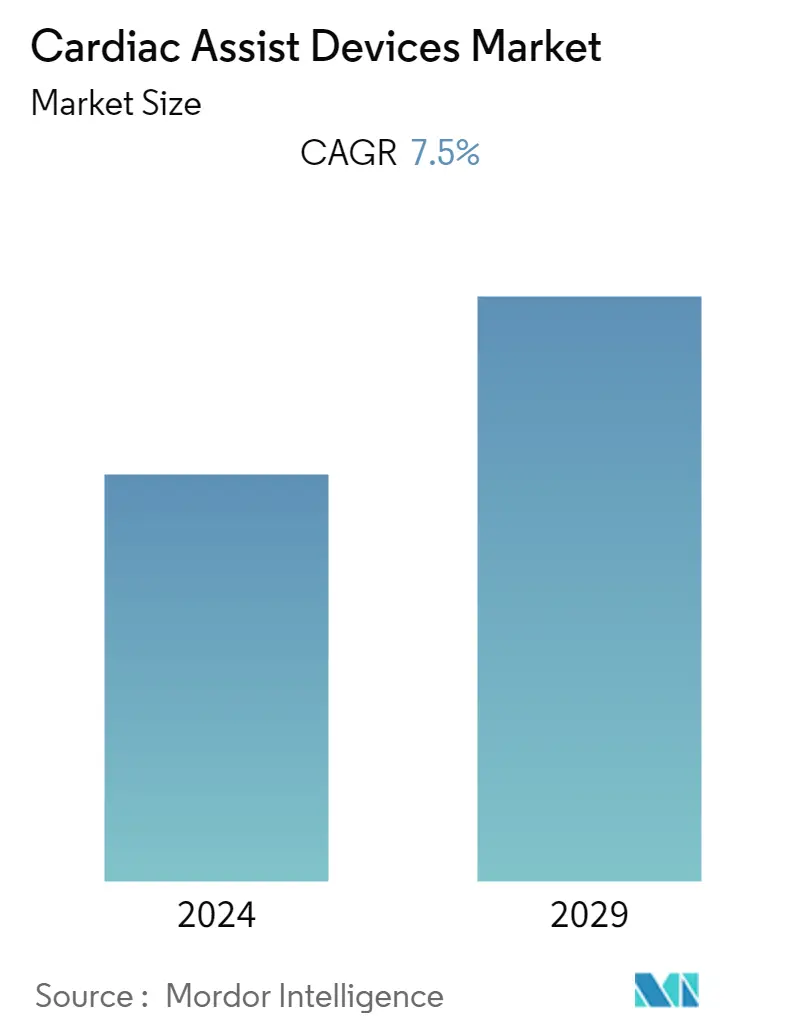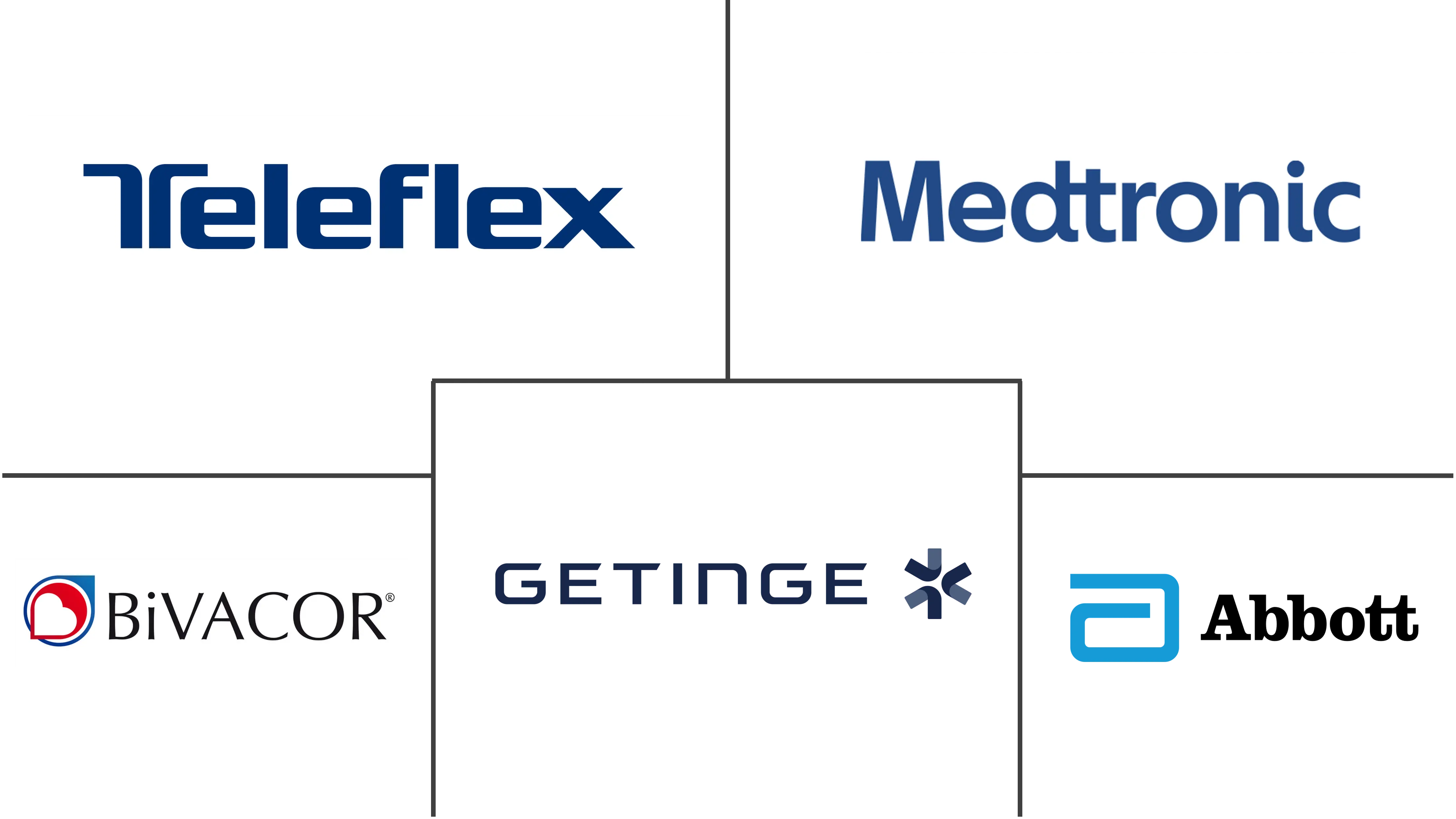Market Size of Cardiac Assist Devices Industry

| Study Period | 2021 - 2029 |
| Base Year For Estimation | 2023 |
| CAGR | 7.50 % |
| Fastest Growing Market | Asia Pacific |
| Largest Market | North America |
| Market Concentration | Medium |
Major Players
*Disclaimer: Major Players sorted in no particular order |
Need a report that reflects how COVID-19 has impacted this market and its growth?
Cardiac Assist Devices Market Analysis
The Cardiac Assist Devices Market is expected to register a CAGR of 7.5% during the forecast period.
The COVID-19 pandemic impacted the production of cardiovascular devices. Furthermore, the delay of elective procedures due to COVID-19-related measures adversely affected the cardiac assist devices market, especially in 2020. While some cardiovascular procedures are considered urgent, others were postponed and delayed at the beginning of the global pandemic. Hence, lifestyle changes and medication were temporarily prescribed instead of cardiovascular procedures for some patients. Another factor negatively impacting the market was the reduction in the diagnosis of cardiovascular diseases due to healthcare resources being reserved for COVID-19 patients. Many medical device companies experienced losses in their cardiovascular device businesses due to the pandemic. For example, Medtronic announced a 33% reduction in its cardiac and vascular business sectors in its 2020 quarterly financial results. The continuous strain of the pandemic negatively impacted the growth of the studied market by decreasing product demand. In addition, the market growth is stabilizing in the current scenario after COVID-19 as the worldwide restrictions have eased down and the disease screening services have been resumed. Moreover, increasing initiatives by most organizers to provide solutions to the surging cardiovascular diseases is the prime boosting factor for the market growth by 2027.
The major factor driving the market is the rising global burden of various coronary heart diseases, such as stroke and cardiomyopathy, which cause a global burden of cardiac-related deaths. According to the June 2021 update of the WHO, cardiovascular diseases were the leading cause of death around the world, and about three-quarters of deaths from CVDs were recorded in low- and middle-income countries. Thus, due to the high mortality due to CVDs, the demand for disease diagnostics and monitoring is increasing, which is expected to fuel growth in the cardiac assist devices market.
Furthermore, according to the CDC data updated in July 2022, shows that coronary heart disease is the most common type of heart disease, and approximately 20.1 million adults of age 20 and older have the disease in the United States. This burden of cardiovascular diseases is further expected to increase due to the high prevalence of associated risk factors such as hypertension, obesity, smoking, diabetes, and others, along with a sedentary lifestyle. Thus, the surge in the prevalence of cardiovascular diseases leads to rising demand for the use of cardiac assist devices used in disease monitoring and treatment, thereby driving the growth of the cardiac assist device market over the forecast period.
Moreover, technologies used in the development of cardiology devices have improved significantly over the past decade, and indications for these devices have expanded. This has led to an increasing number of patients being managed with cardiology devices, resulting in exponential therapeutical and monitoring outcomes. Artificial intelligence is one such advancement having a significant positive impact on cardiology with improved capabilities to diagnose certain heart conditions. For instance, in March 2022, Cardiovascular Systems, Inc. (CSI) announced the first-in-human experience with Propel, its first-generation percutaneous ventricular assist device (VAD), offering hemodynamic support for patients undergoing high-risk percutaneous coronary interventions (HR-PCI).
However, the availability of alternative treatments like pacemakers and the risk associated with device implantation are the factors restraining the growth of the cardiovascular devices market.
